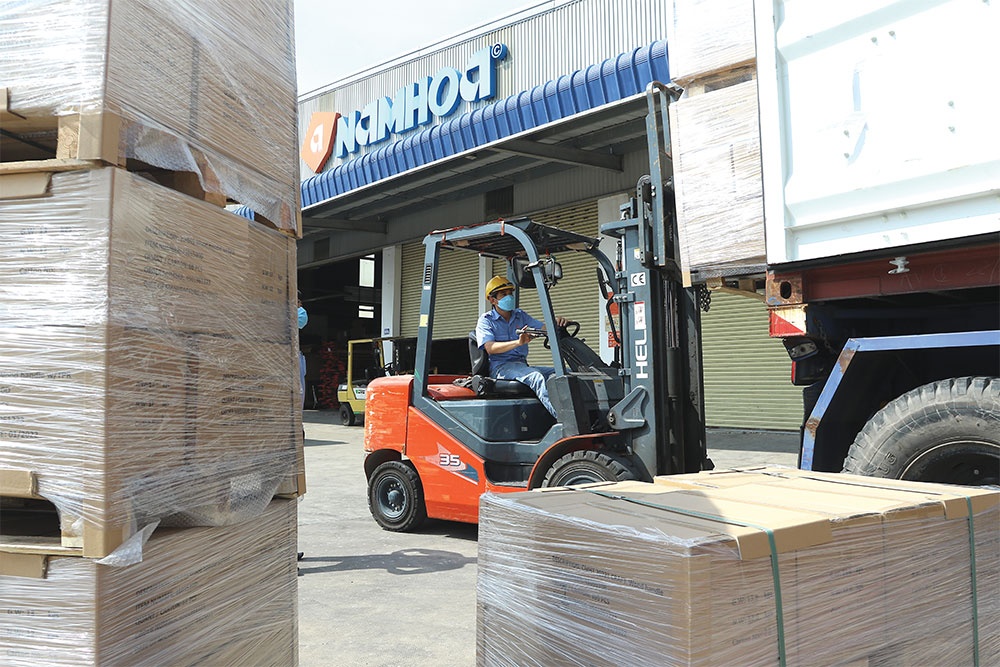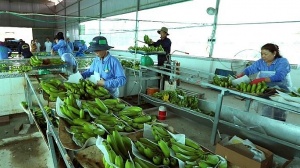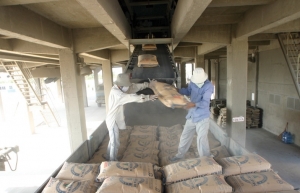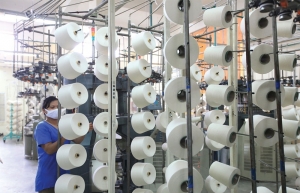Strong 2022 export results set to continue on front foot
 |
| The outlook is positive for exports in the year ahead, after a strong performance in 2022, photo Le Toan |
The Central Institute for Economic Management under the Ministry of Planning and Investment has sketched out two scenarios for the Vietnamese economy in 2023, based on the record goods export turnover of $371.5 earned last year – up 10.6 per cent on-year thanks to global demand rising, and also based on domestic production bouncing back.
Under the first scenario, the export turnover will increase 7.21 per cent, meaning $398.66 billion, while under the second scenario, the rate will be 8.43 per cent, or $403.2 billion.
According to a General Statistics Office (GSO) survey on manufacturing and processing businesses in Q4 of last year, 31.4 per cent of respondents said their production volume will increase in Q1 of 2023 against Q4 of last year, and the rate of those forecasting that their production will stabilise in Q1 of 2023 is 38.5 per cent.
When it comes to export orders, 42.7 per cent of surveyed enterprises predict that their export orders will stabilise in Q1 of this year. Only one-quarter of respondents project that these types of orders will increase in Q1.
The government has set a target that in 2023, Vietnam’s total goods export-import value will be about $795 billion, up about 8 per cent against this year. In which the export turnover will be $398 billion – up over 8 per cent on-year. The trade surplus will stay at about $1 billion, far lower than the $11.2 billion recorded last year.
In 2022, according to the Ministry of Industry and Trade (MoIT), Vietnam’s export-import turnover reached $732.5 billion – up 9.5 per cent on-year regardless of difficulties in export markets, especially the US, China, the EU, South Korea, and Japan.
The US, China, and the EU hold the biggest shares of Vietnam’s exports, at $109.1 billion (29.34 per cent), $58.4 billion (15.7 per cent), and $47.1 billion (12.7 per cent), respectively. Vietnam’s exports to these three economies last year also witnessed an on-year rise, standing at 13.3, 4.5, and 17.4 per cent, respectively.
In 2022, Vietnam also saw domestic exporters reap an export turnover of $95.09 billion – up 6.5 per cent on-year and accounting for 25.6 per cent of total export turnover, while foreign exporters harvested an export turnover of $276.76 billion (including crude oil exports) – representing an on-year climb of 12.1 per cent and responsible for 74.4 per cent of total.
According to the GSO, the biggest driver of Vietnam’s export turnover is the shipment of mobile phones and their spare parts, which last year fetched $59.29 billion, up 3.1 per cent on-year. In Vietnam, Samsung holds over 90 per cent of export turnover of these products.
Samsung and many other manufacturers of computers, laptops, and many other electronic products, such as LG, Canon, and Intel have exported these products with total turnover of $55.24 billion in 2022, up from $51 billion in 2021.
Elsewhere, revenues from crude oil exports sat at $3.34 billion, equivalent to 273 per cent of the year’s estimates and up 72.5 per cent on-year.
Nevertheless, many experts said that Vietnam’s new export target for this year may be unreachable due to various risks lingering that could affect the country’s trade.
According to the World Bank, global growth is estimated to slump from 5.7 per cent in 2021 to 2.9 per cent in 2022.
“It is expected to hover around that pace over 2023-2024, as the war in Ukraine disrupts activity, investment, and trade in the near term, pent-up demand fades, and fiscal and monetary policy accommodation is withdrawn,” said the World Bank in a recent press release.
“Growth in advanced economies is projected to have sharply decelerated from 5.1 per cent in 2021 to 2.6 per cent in 2022 - 1.2 percentage point below projections in January. Growth is expected to further moderate to 2.2 per cent in 2023, largely reflecting the further unwinding of the fiscal and monetary policy support provided during the pandemic,” it added.
Risks include growth slowdown or stagflation in main export markets, further commodity price shocks, continued disruption of global supply chains, or the emergence of new COVID-19 variants. Domestic challenges include continued labour shortages, the risk of higher inflation, and heightened financial sector risks, the World Bank warned.
The government has required the MoIT to seek solutions to boost exports and closely control imports, and take advantages of commitments in signed free trade agreements in order to expand export markets.
The MoIT is also ordered to direct Vietnam’s trade offices overseas to seek more information and demands from the markets where they are located to timely provide consultancy for the government and the prime minister on how to boost exports to these markets.
| Phung Duc Tien - Deputy Minister Ministry of Agriculture and Rural Development | |
Many items encouraged for official export to China will see robust development in the coming years as a result of the protocol signing and border opening. In the month after the official exportation of durian to this market in 2022, its price climbed by 4.12 per cent. | |
| Dr. Nguyen Xuan Thanh Fulbright University | |
The US Federal Reserve is anticipated to increase interest rates three times this year, in February, March, and May. After then, interest rates on the interbank market will continue at 5-5.25 per cent until the end of 2023. The absence of a race in domestic interest rates against the US dollar, as well as exchange rate pressure, has allowed Vietnam to adjust its policy direction and achieve macro-balances. |
 | Fruit exports to China increase sharply As one of the main markets for Vietnamese fruit and vegetables, the recovery of exports to China will contribute to boosting Vietnam's fruit and vegetable industry in 2023. |
 | Cement exports under duress from neighbours The removal of a levy on imported cement in the Philippines could encourage Vietnamese exporters to engage in new ventures alongside Thailand. |
 | Garment and textile groups cracking on with orders Despite woes from domestic and export markets, garment and textile businesses have been excited to start production in the new lunar year, finding out new opportunities and markets to reach the goals set forth. |
What the stars mean:
★ Poor ★ ★ Promising ★★★ Good ★★★★ Very good ★★★★★ Exceptional
 Tag:
Tag:
Related Contents
Latest News
More News
- HEINEKEN Vietnam partners with Ho Chi Minh City Traffic Police on road safety drive (December 17, 2025 | 09:42)
- BUV and China’s CSCSE sign MoU to boost educational cooperation (December 17, 2025 | 08:00)
- PVT Logistics honoured with ‘Fast Enterprise Award’ at APEA 2025 (December 16, 2025 | 18:22)
- Empowering Sustainable Data Centers with Smart Infrastructure Solutions (December 16, 2025 | 13:59)
- Vietjet wins gold ESG transport sustainability award in Taiwan (China) (December 13, 2025 | 22:03)
- Legal framework completed for national digital transformation (December 13, 2025 | 21:55)
- SOAR initiative launched at TECHFEST Vietnam 2025 (December 13, 2025 | 10:00)
- Mondelez Kinh Do secures fourth Top 100 Sustainable Company nod (December 13, 2025 | 09:00)
- Vietnam advances three-pillar strategy to prevent cervical cancer (December 12, 2025 | 20:00)
- MCH shares secure approval for listing on HSX (December 12, 2025 | 12:59)























 Mobile Version
Mobile Version